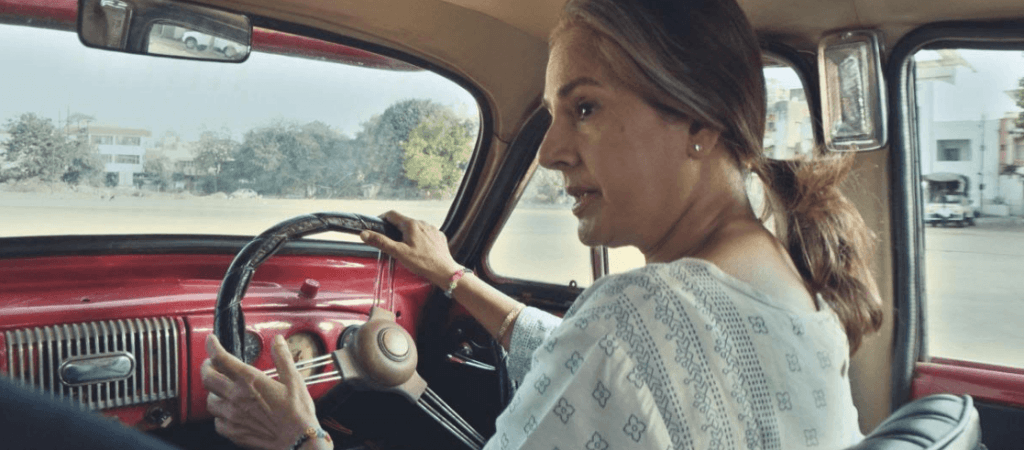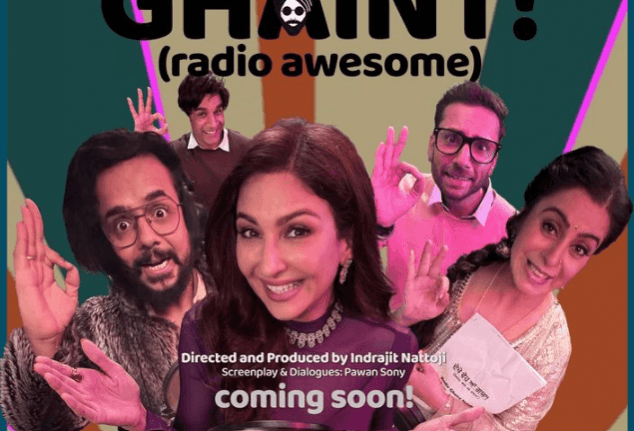
Indrajit Nattoji is back with two films - Kitu Gidwani starrer Madam Driver and Saumya Tandon starrer Radio Ghaint. The ace filmmaker known for making waves with Aafat-e-Ishq starring Neha Sharma and Deepak Dobriyal, is set to wow the audience with his two new features at the Tasveer Film Festival and Market, USA.

International Business Times, India, got in touch with the director to talk about the characters in the film, the inspiration behind the stories, challenges as an independent filmmaker, working with Saumya Tandon and Kitu Gidwani, and lots more.
What inspired you to tell the stories of Madam Driver and Radio Ghaint?
The films are a personal ode to all the women I've known and met. It's a nod to their strength, resilience, and the quiet battles they fight daily. Both Madam Driver and Radio Ghaint are part of an anthology exploring women's lives in small-town and urban India, confronting the deeply ingrained patriarchal belief that women are the "weaker sex." Phrases like "women are bad drivers", and societal expectations about their roles still reflect this bias.
In many parts of the world, including India, women have internalised these narratives, often viewing themselves as lesser, though many continue to fight for their identity and rights. Madam Driver is a coming-of-age drama about a middle-aged woman learning to drive, symbolising her journey to empowerment and self-reliance. Radio Ghaint, a comedic drama, follows a woman searching for her identity as an Indian wife, challenging traditional gender roles.
In crafting these stories, I aimed to create a cultural universe where religious and caste differences are incidental, not defining. In Madam Driver, characters like Devika, a vegetarian Hindu, and Hassan, a Sunni Muslim, interact as fellow humans. Their everyday exchanges reflect an India that once was—the inclusive country my generation grew up in.

Can you elaborate on the character development in Madam Driver, particularly the protagonist's journey?
In Madam Driver, the character development of Devika Dixit, a 55-year-old woman from a small town in Gujarat, reflects the deeply ingrained societal stereotypes women face, especially in developing countries. Women are often labeled the "weaker sex" due to a long-standing narrative, now institutionalized as patriarchy. Devika, like many women, has internalized this belief, accepting that some roles, like driving, are "not for women." However, Devika embarks on a transformative journey, bravely challenging her own fears by learning to drive, a symbolic act of reclaiming control over her life.
With the reluctant help of her instructor, Hassan, their lessons evolve into a journey of self-discovery and mutual growth. As Devika confronts her insecurities and struggles, she not only overcomes her fear of driving but also inspires Hassan to reevaluate his life. It's a story of reinvention, navigating grief, and finding joy in rediscovering oneself.
What specific themes do you hope audiences will take away from each featurette?
Both Madam Driver and Radio Ghaint are personal tributes to the strength, resilience, and quiet battles of the women I've known and met. Through these films, I hope audiences take away the theme of challenging societal expectations and recognizing the everyday courage women show in navigating patriarchy, whether through reclaiming control of their lives, as in Madam Driver, or finding their identity, as in Radio Ghaint.
How do the settings of small-town India influence the narratives of both films?
The small-town settings of Gujarat in Madam Driver and Punjab in Radio Ghaint play a crucial role in shaping the narratives of both films. These locations are not just backdrops but integral to the characters' lives, reflecting the unique cultural and societal norms that influence their behaviors and decisions. Small towns in India often carry deep-rooted traditional values, where change is slow, and societal expectations can be rigid, particularly for women.
By setting the stories in these locales, the films highlight the struggles of women navigating not just their personal challenges, but also the larger societal pressures that come with these close-knit communities. I've deliberately used local idioms and dialects in both films to create a realistic and immersive experience, bringing authenticity to the characters and their interactions.
In Madam Driver, the use of Gujarati expressions adds depth to Devika's character, making her journey of learning to drive more relatable to her environment. Similarly, in Radio Ghaint, the Punjabi setting, language, and humor provide the cultural context for the protagonist's search for identity, adding layers of complexity to her narrative. These small-town settings help amplify the characters' struggles, resilience, and eventual growth, making their stories more grounded and emotionally resonant.
How do you believe participating in the festival circuit can impact the future of independent films like yours?
Participating in the festival circuit is crucial for building credibility and generating buzz for independent films like Madam Driver and Radio Ghaint. It opens up international opportunities and ensures the films reach their fullest potential. We're carefully exploring all options to find platforms that align with their narratives and audiences. By allowing the films to gain momentum through festivals, we can connect with a broader, more appreciative audience and give these stories the recognition they deserve.

What challenges did you face as an independent filmmaker while working on these projects?
I have made 500+ ad films and have two studio feature film releases. But going independent with Madam Driver and Radio Ghaint? That's a whole different ball game. Unlike working for studios where resources flow, here I was, my own client, counting every paisa while balancing my vision and my team's well-being. Everything was at stake—no one was to blame or pass the buck.
The experience was freeing; I was truly independent, with no one telling me what the audience wanted—especially when no one really knew! Yet, that freedom also came with its own set of fears. As Akira Kurosawa said, "In order to create, you have to be in a state of mind where you don't care what anyone else thinks." Every decision and challenge fell on me, but it's been deeply rewarding because these stories come straight from the heart.


!['Had denied Housefull franchise as they wanted me to wear a bikini': Tia Bajpai on turning down bold scripts [Exclusive] 'Had denied Housefull franchise as they wanted me to wear a bikini': Tia Bajpai on turning down bold scripts [Exclusive]](https://data1.ibtimes.co.in/en/full/806605/had-denied-housefull-franchise-they-wanted-me-wear-bikini-tia-bajpai-turning-down-bold.png?w=220&h=135&l=50&t=40)






!['Had denied Housefull franchise as they wanted me to wear a bikini': Tia Bajpai on turning down bold scripts [Exclusive]](https://data1.ibtimes.co.in/en/full/806605/had-denied-housefull-franchise-they-wanted-me-wear-bikini-tia-bajpai-turning-down-bold.png?w=220&h=138)
!['Had denied Housefull franchise as they wanted me to wear a bikini': Tia Bajpai on turning down bold scripts [Exclusive]](https://data1.ibtimes.co.in/en/full/806605/had-denied-housefull-franchise-they-wanted-me-wear-bikini-tia-bajpai-turning-down-bold.png?w=220&h=135)


![Nayanthara and Dhanush ignore each other as they attend wedding amid feud over Nayanthara's Netflix documentary row [Watch]](https://data1.ibtimes.co.in/en/full/806599/nayanthara-dhanush-ignore-each-other-they-attend-wedding-amid-feud-over-nayantharas-netflix.jpg?w=220&h=135)